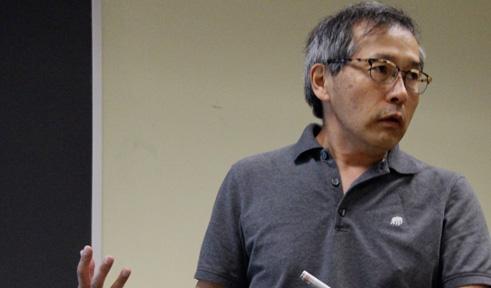Soichi Tanda

Recent News
Education
D.Sc., Hokkaido University, Sapporo, Japan
Courses Taught
- BIOS 1700 Biological Sciences I (Molecules and Cells): Fall
- BIOS 3100 General Genetics: Spring
- BIOS 3105 Laboratory Genetics (Team teaching): Spring
- BIOS 4070 Developmental Biology: Fall
Research Interests
- Lab: Life Sciences Building 210E/F
One of the greatest mysteries in the universe is how a single fertilized egg develops into a multicellular body with different organs; that is, development. The process of development is built on an intricate balance between proliferation and differentiation. Breaking this balance often causes devastating consequences in our lives. A good example is cancer, in which cells proliferate endlessly until it takes the life of the host. Our laboratory uses a model organism, the fruit fly Drosophila melanogaster, to understand how this balance is maintained using genetics including transgenic flies, cell biology, microscopy, and bioinformatics. Our current project aims to understand genetic and molecular mechanisms that control the activity of the JAK/STAT oncogene pathway, whose overactivation leads to leukemias in humans and Drosophila. We investigate what genes affect levels of JAK/STAT activity, what genes are controlled by the pathway, and what other pathways, such as the Wnt pathway, cross talk with this pathway.
Another project in our laboratory is to understand how the actin cytoskeleton builds specific cellular structures like filopodia, thread-like extensions from the surface of the cell. Our particular interest is microvilli and their derivatives. Microvilli are thin finger-like structures resembling clustered bristles of a toothbrush on the cell surface. Stereocilia of hair cells in the inner ear are a variation of microvilli and critical for hearing and balance. Although many proteins regulate dynamics of the actin cytoskeleton, we investigate the role of a novel protein called Clic, loss of which causes deafness in humans and mice. We investigate how Clic works with other proteins to build and maintain stereocilia in mice using immunohistochemistry, biochemistry, and microscopy. We also use Drosophila to search for additional Clic-interacting proteins to better understand the biology of stereocilia. Once we find candidate genes using Drosophila, we will examine if they function together with Clic in mice hair cells.
Biography
I studied biology with an emphasis on genetics at Hokkaido University, Sapporo, Japan. After obtaining B.S., M.S., and D.Sc. degrees there, I had postdoctoral training at the National Institute of Environmental and Health Sciences under Dr. Charles Langley (now at the University of California, Davis) and at the Johns Hopkins University under Dr. Victor Corces (now at Emory University). I studied genetic and molecular mechanisms of transposition of a retrotransposon named Tom in Drosophila ananassae. I switched my research focus to genes that regulate developmental processes of Drosophila melanogaster at the University of Maryland, College Park, and moved to Ohio University in 2000.
Representative Publications
Epps, J.L. and S. Tanda, 1998 The Drosophila semushi mutation blocks nuclear import of Bicoid during embryogenesis. Curr. Biol. 8: 1277-1280.
Apionishev, S., D. Malhotra, S. Raghavachari, S. Tanda, and R. S. Rasooly, 2001 The Drosophila UBC9 homologue lesswright mediates the disjunction of homologues in meiosis. Genes to Cells 6: 215-224.
Huang, L., S. Ohsako, and S. Tanda, (2005) The lesswright mutation activates Rel-related proteins, leading to overproduction of larval hemocytes in Drosophila melanogaster. Dev. Biol. 280: 407-420.
Casso, D., S. Tanda, B. Biehs, B. Martoglio, and T. B. Kornberg (2005) Drosophila signal peptide peptidase is an essential protease for larval development. Genetics 170: 139-148.
Littler, D. R., S. J. Harrop, L. J. Brown, G. J. Pankhurst, A. V. Mynott, P. Luciani, R. A. Mandyam, M. Mazzanti, S. Tanda, M. A. Berryman, S. N. Breit, P. M. Curmi (2007) Comparison of vertebrate and invertebrate CLIC proteins: The crystal structures of Caenorhabditis elegans EXC-4 and Drosophila melanogaster DmCLIC. Proteins 71: 364-378.